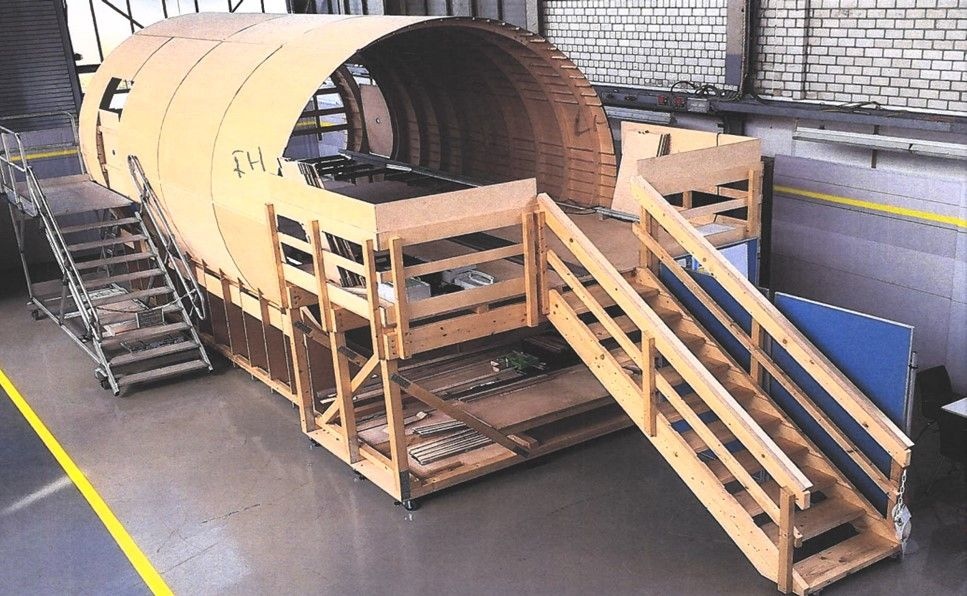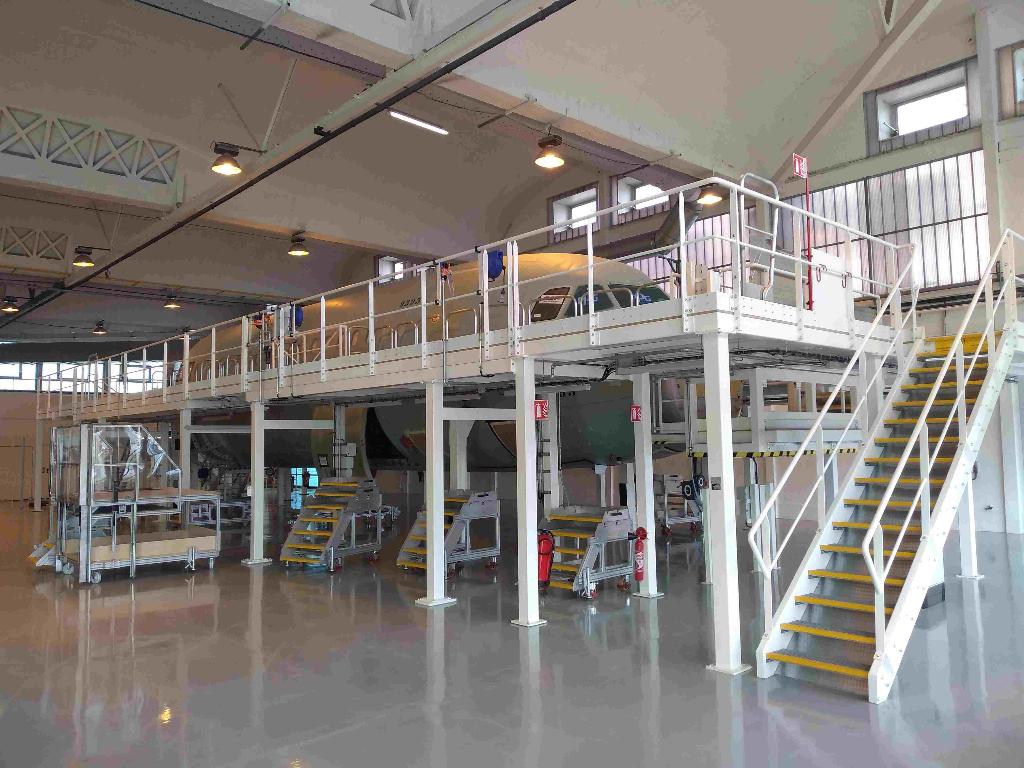The shape of things to come

The A321XLR programme demonstrator models are helping the teams across the Airbus sites and its supply chains develop an early maturity for design, production, training and maintenance.
Airbus’ A321XLR demonstrator testing teams are busy fine tuning production maturity across its sites. The assets for the first A321XLR are being built and the major component production lines are taking shape across the various sites in the UK, Germany and France.

Many components and parts are now in the final test phase to de-risk the route to flight clearance and serial manufacturing. Key to achieving this are various demonstrators, which together play a major role to validate all the design work, assembly processes and ensuring that the parts are fully prepared for manufacturing.
These full-size demonstrators are also being used to pre-train production-line staff at the final assembly facility in Hamburg where the first A321XLR will be built. Overall, this phase is supported by many people, with demonstrators and physical mock-ups in various sites, with the teams working transversally in collaboration.
“For some time already we have been using a rich mixture of 3D digital data, which includes virtual reality (VR) and augmented reality (AR), to demonstrate the 3D digital model,” begins Gary O’Donnell, head of the A321XLR programme. “We have also been using early physical demonstrators, which could be wooden mock-ups like those in Hamburg, or 3D printed parts. More recently we come to the full-scale production demonstrators which we see more and more of today – primarily focusing around Saint Nazaire and Hamburg.
“Why do we use them? I see three steps: The early physical demonstrators and the virtual demonstrators enable us to validate our design decisions and close these topics. Most of that was completed in 2020. Then we have the second stage: the full-scale production standard demonstrators which primarily support the training and the industrial process maturity, and they help secure our ramp-up, as we run them ‘at rate’. This is happening across the assembly areas – Saint Nazaire, Hamburg, and also in Broughton. Likewise for the new water/waste tank, landing gears and brakes.”
“Then for the third level we are running demonstrators for maintenance, repair and customer support teams, in order that they can use the demonstrators to create the airline documents, the technical documents and repair manuals,” O’Donnell continues. “There is a mixture here of physical demonstrators with VR and AR to allow the teams to really test how they can change and fix parts in the operations system – whether in a hangar or on the apron, so that when they are writing the repair manuals or the technical documents they have been able to check on these virtual references to make the process easier.”
The erection section
As the major component assembly (MCA) phase of the first A321XLR flight-test aircraft draws closer, the focus at the time of writing – in terms of demonstrators – is naturally on two large fuselage structures and systems demonstrators located in Hamburg, Germany and in Saint Nazaire, France. Respectively, these Physical Mock-ups (PMUs) are the ‘Pre-Industrial System Accelerator’ (PISA) for the Centre & Aft Fuselage (CAF) section, and the Nose & Forward Fuselage (NFF) section.

“In the PMU demonstrator for the forward section we are focused on the XLR’s structure reinforcement due to the different loads, and also on the new systems improvement for cabin comfort,” states A321XLR airframe leader, Martin Schnoor. “The PMU gives us the opportunity to bring all modifications together from airframe, systems and cabin to confirm the industrial interfaces.
“Meanwhile the PMU in Hamburg is focusing on the XLR’s major components including the rear-centre-tank (RCT) integration; water tank integration; the extended fuel system and the modified hydraulic system. Here, we take full advantage of the proximity of the rear fuselage PMU to the Final Assembly Line (FAL) to provide production operator training before they go into the first serial produced aircraft.”
A holding pattern
He points out that these demonstrators are not just a one-off exercise: “We will keep these PMU demonstrators ‘on stage’ not only during the XLR’s introduction, but also to be continually updated over the longer term, such as for future modifications and heads-of-versions ‘HoVs’, as well for shopfloor training.”

Hauke Delmas, head of single aisle XLR equipping in Hangar 259 concurs: “All these demonstrators help us to observe the systems, activities, workflows and premises under holistic real conditions at an early stage before start of production. The demonstrators, along with classroom training and VR/AR training, will be an integral part of our employee training and onboarding in the future.
“They provide a protected space for learning and further development. It is therefore possible to learn from mistakes on the mock-ups without endangering production or safety. Of course, it also makes sense from a business point of view to decouple ongoing production from design changes, modifications, new installations and the training of new employees.”












